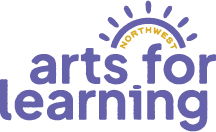| Program Model | In Class |
| Artistic Discipline | Dance |
| Grades | K | 1 | 2 | 3 | 4 | 5 |
| Min. residency sessions/classroom | 3 |
| Program Requirements | Regular classroom |
| Instruction Language(s) | English |
| Availability Notes |
View All Programs
About the Artist
Honored with both the Washington Alliance Dance Division Award as well as the Northwest Region Dance Teacher of the Year, Mr. A. has introduced thousands of students and teachers to the classroom benefits of dance and movement.
Teaching Philosophy
Dr. Jan "Yon" Abramovitz integrates the highlights of his research on kinesthetic learning with classroom tested activities from his thirty five years of teaching.
Testimonial
Program Description
Dance is the language of movement. It is a language that our students already have a vocabulary for. Kinesthetic Learning adapts that language to the limited spatial constraints of the elementary classroom. It can be used to teach content and deepen understanding on any academic subject. This artform is particularly effective at motivating and engaging active learners, especially useful in this post pandemic period. Using the discipline of dance to teach focus and concentration, students are guided to explore connections to their body, self space and stillness. Immersed in collaborative and team building activities while developing problem solving and critical thinking skills, students gain tools that they can use to prepare themselves to learn. While the Vibrant Classroom philosophy is to individually design each residency in collaboration with the schools and teachers, following are several examples of residencies from past years.
Teaching Mindfulness through Movement: One of Dr. Abramovitz's most requested workshop series these classes combined an introduction to brain anatomy (developmentally appropriate for K-5) with hands on activities for using movement to develop focus, concentration and readiness for learning. Drawing on activities from Brain Gym, Ideokinesis and Dance, Dr. Abramovitz presented a number of techniques to help students increase their attention, listening and comprehension skills. Student sessions were then followed by after school "de-brief" sessions in which teachers learned how to develop the activities that were modeled earlier in the day.
Safe, Responsible, Respectful - Building School Community with the Movement Arts: This residency was designed for a group of teachers (K-6) who wanted to learn to use the movement arts to improve student motivation and build community at their school.
Teaching the Six Writing Traits through Movement: In this residency, Dr. Abramovitz collaborated with a group of third grade teachers to improve their students' skill at rewriting and revision. Prior to Dr. Abramovitz's visit the teachers had each student write a paragraph. Then the students participated in a movement experience devoted to one of the Six Writing Traits. Following the visit, the students rewrote their paragraph with an eye toward the particular writing trait they had just studied. Particular traits that were studied were Ideas and Content, Organization, Voice, and Word Choice.
Teaching Mindfulness through Movement: One of Dr. Abramovitz's most requested workshop series these classes combined an introduction to brain anatomy (developmentally appropriate for K-5) with hands on activities for using movement to develop focus, concentration and readiness for learning. Drawing on activities from Brain Gym, Ideokinesis and Dance, Dr. Abramovitz presented a number of techniques to help students increase their attention, listening and comprehension skills. Student sessions were then followed by after school "de-brief" sessions in which teachers learned how to develop the activities that were modeled earlier in the day.
Safe, Responsible, Respectful - Building School Community with the Movement Arts: This residency was designed for a group of teachers (K-6) who wanted to learn to use the movement arts to improve student motivation and build community at their school.
Teaching the Six Writing Traits through Movement: In this residency, Dr. Abramovitz collaborated with a group of third grade teachers to improve their students' skill at rewriting and revision. Prior to Dr. Abramovitz's visit the teachers had each student write a paragraph. Then the students participated in a movement experience devoted to one of the Six Writing Traits. Following the visit, the students rewrote their paragraph with an eye toward the particular writing trait they had just studied. Particular traits that were studied were Ideas and Content, Organization, Voice, and Word Choice.
Keywords
Dance, Kinesthetic Learning, Movement
Questions?
Contact This e-mail address is being protected from spambots. You need JavaScript enabled to view it




